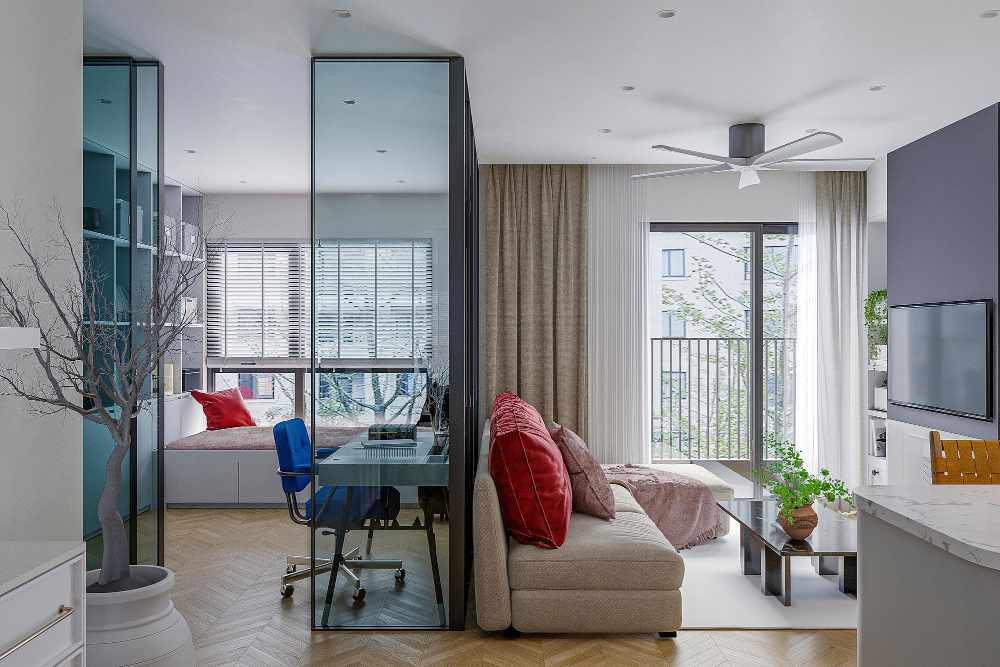Furnished vs. Unfurnished Rentals: Your Complete Guide

Choosing between furnished and unfurnished rentals can feel overwhelming, especially when you're navigating a competitive housing market. Both options come with distinct advantages and potential drawbacks that could significantly impact your living experience and budget.
Whether you're relocating for work, downsizing, or simply exploring new living arrangements, understanding the key differences between these rental types will help you make an informed decision. From upfront costs to lifestyle considerations, each option serves different needs and circumstances.
This guide breaks down everything you need to know about furnished and unfurnished rentals, helping you determine which choice aligns best with your situation, budget, and long-term goals.
What Are Furnished Rentals?
Furnished rentals come equipped with essential furniture and household items needed for comfortable living. These properties typically include bedroom furniture, living room seating, dining sets, kitchen appliances, and basic household necessities like linens and cookware.
The level of furnishing varies significantly between properties. Some offer basic essentials like a bed, couch, and dining table, while others provide fully equipped homes with everything from coffee makers to decorative accents. Higher-end furnished rentals often include modern appliances, quality furniture, and amenities that create a move-in-ready experience.
Corporate housing and short-term rental markets commonly feature furnished options, catering to professionals, relocating families, and temporary residents who need immediate housing solutions without the hassle of purchasing furniture.
Understanding Unfurnished Rentals
Unfurnished rentals provide empty living spaces where tenants bring their own furniture, appliances, and household items. These properties typically include built-in fixtures like kitchen cabinets, bathroom fixtures, and sometimes major appliances like refrigerators or washers and dryers, depending on the rental agreement.
Most traditional apartment complexes and single-family homes fall into this category. Unfurnished rentals give tenants complete control over their living environment, allowing them to personalize their space according to their preferences and lifestyle needs.
These rentals often require longer lease terms, typically ranging from six months to multiple years, as they target tenants seeking more permanent housing solutions.
Cost Comparison: Furnished vs. Unfurnished
Furnished Rental Costs
Furnished rentals command higher monthly rent due to the convenience and value of included furniture and amenities. Expect to pay 20-50% more than comparable unfurnished properties, with premium locations and luxury furnishings pushing rates even higher.
However, furnished rentals can offer significant savings when you factor in the avoided costs of purchasing furniture, utility setup fees, and moving expenses. For short-term stays or temporary relocations, these properties often prove more economical than buying furniture for a brief period.
Security deposits for furnished rentals typically run higher to protect the landlord's investment in furniture and household items. Some properties also charge additional cleaning fees or require renters insurance that covers furnished items.
Unfurnished Rental Expenses
Unfurnished rentals offer lower monthly rent but require substantial upfront investment in furniture and household necessities. First-time renters or those moving from furnished situations may face costs of $3,000-$15,000 or more to adequately furnish a home.
Additional expenses include utility deposits, installation fees for internet and cable services, and moving costs for transporting furniture. These upfront investments can create financial strain but may prove worthwhile for long-term residents who build equity in their belongings.
Monthly expenses tend to be more predictable with unfurnished rentals, as tenants control their utility usage and aren't subject to premium pricing for furnished convenience.
Who Should Choose Furnished Rentals?
Temporary and Corporate Residents
Business professionals on temporary assignments, corporate relocations, or contract workers benefit greatly from furnished rentals. These properties eliminate the stress of furnishing a temporary home and allow professionals to focus on their work responsibilities.
Students attending programs lasting one semester to several years find furnished rentals particularly appealing. International students or those attending programs far from home avoid the complexity of purchasing and later disposing of furniture.
Convenience Seekers
People who value convenience over cost savings often prefer furnished rentals. These properties offer immediate move-in capability with minimal planning and logistics. Busy professionals, frequent relocators, or individuals going through life transitions appreciate the simplified rental process.
Digital nomads and remote workers who change locations frequently find furnished rentals essential for maintaining productivity without the burden of managing household logistics.
Budget-Conscious Short-Term Renters
Despite higher monthly costs, furnished rentals can be budget-friendly for stays under 12-18 months. The break-even point varies by location and personal circumstances, but avoiding furniture purchases often makes financial sense for shorter commitments.
Who Benefits from Unfurnished Rentals?
Long-Term Residents
Tenants planning to stay in one location for multiple years typically find unfurnished rentals more economical. The initial furniture investment amortizes over time, and monthly savings accumulate significantly over extended periods.
Families with children often prefer unfurnished rentals to accommodate specialized furniture needs, safety considerations, and the accumulated possessions that come with family life.
Personalization Enthusiasts
Individuals who take pride in decorating and personalizing their living space prefer the blank canvas of unfurnished rentals. These properties allow complete control over aesthetic choices, furniture quality, and room layouts.
Collectors, hobbyists, or people with specific lifestyle needs benefit from choosing their own furniture that accommodates their interests and requirements.
Budget-Conscious Long-Term Renters
Despite higher upfront costs, unfurnished rentals offer better long-term value for budget-conscious renters. Lower monthly payments free up income for other priorities, and owned furniture provides lasting value that moves with tenants.
Key Factors to Consider
Duration of Stay
Your intended length of residence serves as the primary factor in choosing between furnished and unfurnished rentals. Short-term stays favor furnished options, while longer commitments typically benefit from unfurnished properties.
Consider not just your initial plans but potential changes in circumstances. Job uncertainty, relationship changes, or family planning may affect your housing timeline and influence your decision.
Lifestyle and Preferences
Evaluate your lifestyle preferences and priorities. Some people thrive in minimalist, turnkey environments, while others need personalized spaces filled with meaningful possessions.
Consider your work schedule, travel frequency, and social needs when evaluating furnished versus unfurnished options. High-travel professionals may prefer low-maintenance furnished properties, while homebodies might want to invest in creating their perfect living environment.
Financial Situation
Assess both your current financial resources and long-term financial goals. While furnished rentals require less upfront investment, they may cost more over time. Unfurnished rentals demand significant initial outlay but can provide better long-term value.
Factor in opportunity costs of tying money up in furniture versus investing it elsewhere. Consider your emergency fund, debt obligations, and other financial priorities when making this decision.
Making Your Decision
Start by honestly evaluating your timeline, budget, and lifestyle priorities. Create a detailed cost analysis comparing both options over your expected rental period, including all associated expenses and opportunity costs.
Visit properties of both types to get a feel for what each option offers. Pay attention to furniture quality in furnished rentals and visualize how you'd arrange unfurnished spaces to meet your needs.
Consider hybrid solutions if available. Some landlords offer partially furnished options, or you might negotiate to have certain items included in otherwise unfurnished properties.
Finding the Right Rental Solution
Both furnished and unfurnished rentals serve important roles in the housing market, each addressing different needs and circumstances. Your choice should align with your timeline, budget, lifestyle preferences, and long-term goals.
Take time to thoroughly research options in your target area, as availability and pricing can vary significantly by location and market conditions. Don't rush this important decision—the right choice will enhance your living experience and support your broader life objectives.
If you're looking for furnished rentals in Simpsonville, SC, contact Upstate Corporate Housing today to get a quote and explore options that match your specific needs and timeline.
